Disastrous Effects of Hurricane Helene in the Southern Appalachian Mountains Including a Review of Mechanisms Producing Extreme Rainfall
Abstract
1. Introduction
Fatalities in the United States Mainland from Hurricane Helene and Ex Hurricane Helene
2. Wind Structure Associated with Extreme Inland Freshwater Flooding Around the Globe
2.1. Examples of Extreme Rainfall
- Seoul 26–28 July 2011 69 fatalities.
- Jeddah Saudi Arabia 25 November 2009 122 fatalities and 350 missing.
- Zixing China Typhoon Bilis 15 July 2006 843 fatalities.
- Chennai India 1 December 2015 280 fatalities.
- Chuuk Island Pacific Ocean 2 July 2002 791 fatalities.
- Hue and Danang Vietnam 1–4 November 1999 48 fatalities.
- Kagoshima Japan 6 August 1993 48 fatalities.
- Rapid City South Dakota US 9–10 June 1972 238 fatalities.
- Big Thomson River Colorado US 31 July–1 August 1976 145 fatalities.
- Athens Greece 2 November 1977 36 fatalities.
- Nimes France 3 October 1988 9 fatalities.
- Nimes France 8 September 2002 37 fatalities.
- Lisbon Portugal 19 November 1983 10 fatalities.
- Casablanca Morocco 29–30 November 2010 32 fatalities.
- Samsun Turkey 3 July 2012 12 fatalities.
- Beijing China 21 July 2012 79 fatalities.
- Shanghai and Hangzhou 6–8 October 2013 12 fatalities.
- Wenjiang China 10 July 2013 73 fatalities 180 missing.
- Hyderabad India 23–24 August 1980 140 fatalities.
- Hyderabad India 8–9 August 2008 30 fatalities.
- Hanoi 30–31 October 2008 66 fatalities.
2.2. Other Examples of Extreme Rainfall
3. Methods, Analysis of Vertical Wind Structure, and Buoyancy
4. Results
4.1. The Track of Hurricane Helene
4.2. Rainfall and Flooding in the Asheville Area
4.3. Vertical Wind Structure and Extreme Rainfall
5. Discussion and Conclusions
Funding
Data Availability Statement
Conflicts of Interest
Correction Statement
References
- Amorim, R.; Villarini, G.; Czajkowski, J.; Smith, J. Flooding from Hurricane Helene and associated impacts: A historical perspective. J. Hydrol. X 2025, 27, 100204. [Google Scholar] [CrossRef]
- Little, R.G. What Can We Learn From Hurricane Helene? J. Crit. Infrastruct. Policy 2024, 5, 59–60. [Google Scholar] [CrossRef]
- Miller, G.; Foubert, A. Why Helene Hit So Hard: Lessons for a Future of Bareknuckle Storms. J. Crit. Infrastruct. Policy 2025, 6, e12037. [Google Scholar] [CrossRef]
- Hagen, A.B.; Cangialosi, J.P.; Chenard, M.; Alaka, L.; Delgado, S. Tropical Cyclone Report Hurricane Helene (AL092024) 24–27 September 2024; National Hurricane Centre: Miami, FL, USA, 2025. [Google Scholar]
- Callaghan, J. A Diagnostic from Vertical Wind Profiles for Detecting Extreme Rainfall. Trop. Cyclone Res. Rev. 2017, 6, 41–54. [Google Scholar] [CrossRef]
- Holton, J.R. An Introduction to Dynamic Meteorology; Elsevier: Amsterdam, The Netherlands; Academic Press: Cambridge, MA, USA, 2004; 552p. [Google Scholar]
- Tory, K. The turning winds with height thermal advection rainfall diagnostic: Why does it work in the tropics? Aust. Meteorol. Oceanogr. J. 2014, 64, 231–238. [Google Scholar] [CrossRef]
- Callaghan, J.; Tory, K. On the use of a system-scale ascent/descent diagnostic for short-term forecasting of Tropical Cyclone development, intensification, and decay. Trop. Cyclone Res. Rev. 2014, 3, 78–90. [Google Scholar]
- Callaghan, J.; Power, S.B. A vertical wind structure that leads to extreme rainfall and major flooding in southeast Australia. J. South. Hemisph. Earth Syst. Sci. 2016, 66, 380–401. [Google Scholar] [CrossRef]
- Callaghan, J. A Short Note on the Rapid Intensification of Hurricanes Harvey and Irma. Trop. Cyclone Res. Rev. 2018, 7, 164–171. [Google Scholar] [CrossRef]
- Callaghan, J. The interaction of Hurricane Michael with an upper trough leading to intensification right up to landfall. Trop. Cyclone Res. Rev. 2019, 8, 95–102. [Google Scholar] [CrossRef]
- Callaghan, J. A short note on the intensification and extreme rainfall associated with hurricane lane. Trop. Cyclone Res. Rev. 2019, 8, 103–107. [Google Scholar] [CrossRef]
- Callaghan, J. Extreme rainfall and flooding from Hurricane Florence. Trop. Cyclone Res. Rev. 2020, 9, 172–177. [Google Scholar] [CrossRef]
- Callaghan, J. Weather systems and extreme rainfall generation in the 2019 north Queensland floods compared with historical north Queensland record floods. J. South. Hemisph. Earth Syst. Sci. 2021, 71, 123–146. Available online: https://www.publish.csiro.au/ES/pdf/ES20005 (accessed on 9 June 2025). [CrossRef]
- Callaghan, J. A Climatology of Heavy Rain and Major Flood Events in Victoria 1876–2019 and the Effect of the 1976 Climate Shift. J. Geogr. Res. 2021, 4, 13–33. [Google Scholar] [CrossRef]
- Callaghan, J. The Eastern Australian Floods of February 2022 and Its Relationship with Climate Change. J. Energy Power Technol. 2023, 5, 14. [Google Scholar] [CrossRef]
- Callaghan, J. Development of strong asymmetric convection leading to rapid intensification of tropical cyclones. Trop. Cyclone Res. Rev. 2024, 13, 239–260. [Google Scholar] [CrossRef]
- Davies-Jones, R. Streamwise Vorticity: The origin of updraft in Supercell Storms. J. Atmos. Sci. 1984, 41, 2991–3006. [Google Scholar] [CrossRef]
- Holland, G.J. On the climatology and structure of tropical cyclones in the Australian/southwest Pacific region. Aust. Met. Mag. 1984, 32, 1–46. [Google Scholar]
- Trenberth, K.E. On the Interpretation of the Diagnostic Quasi-Geostrophic Omega Equation. Mon. Weather Rev. 1978, 106, 131–137. [Google Scholar] [CrossRef]
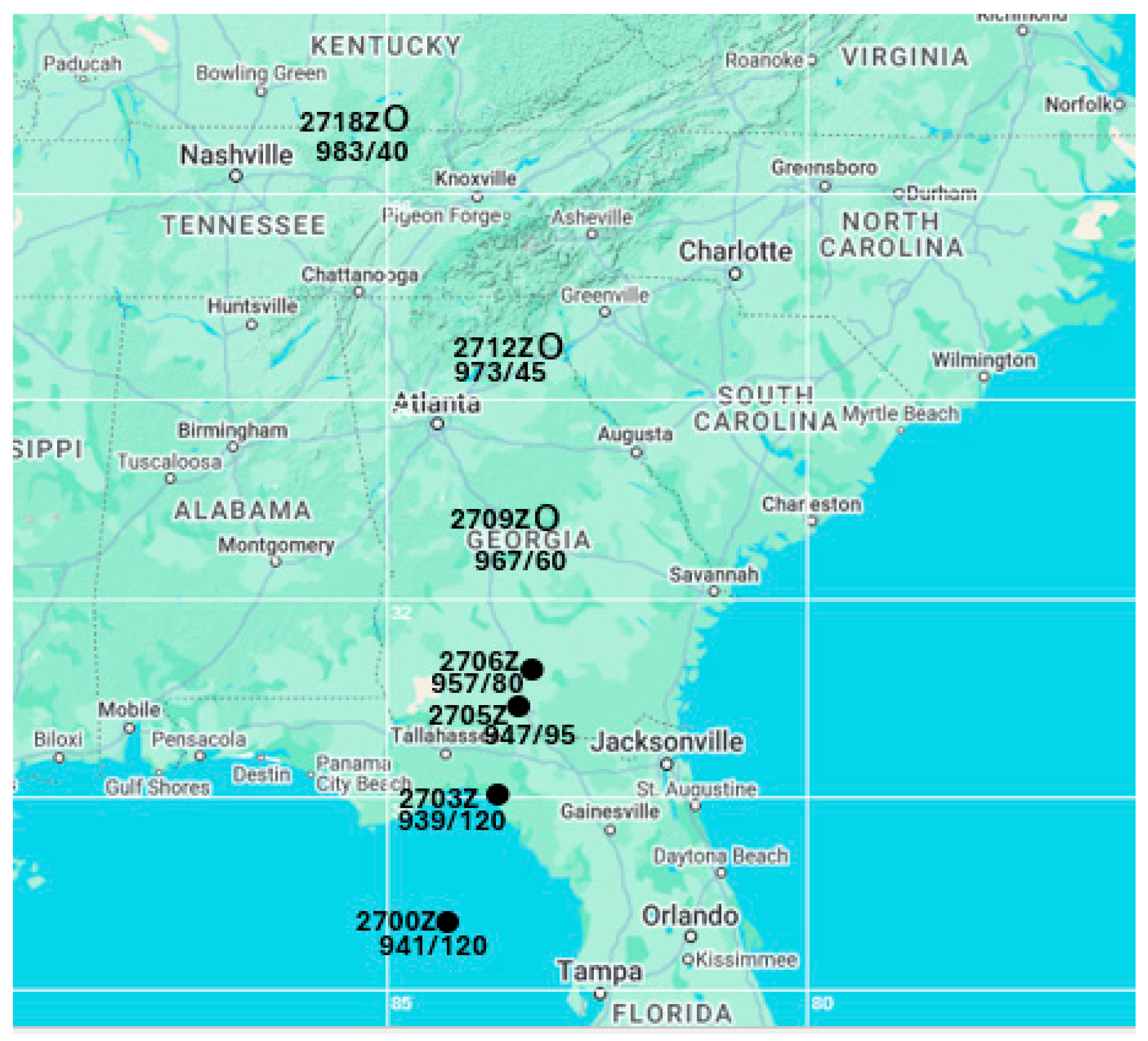

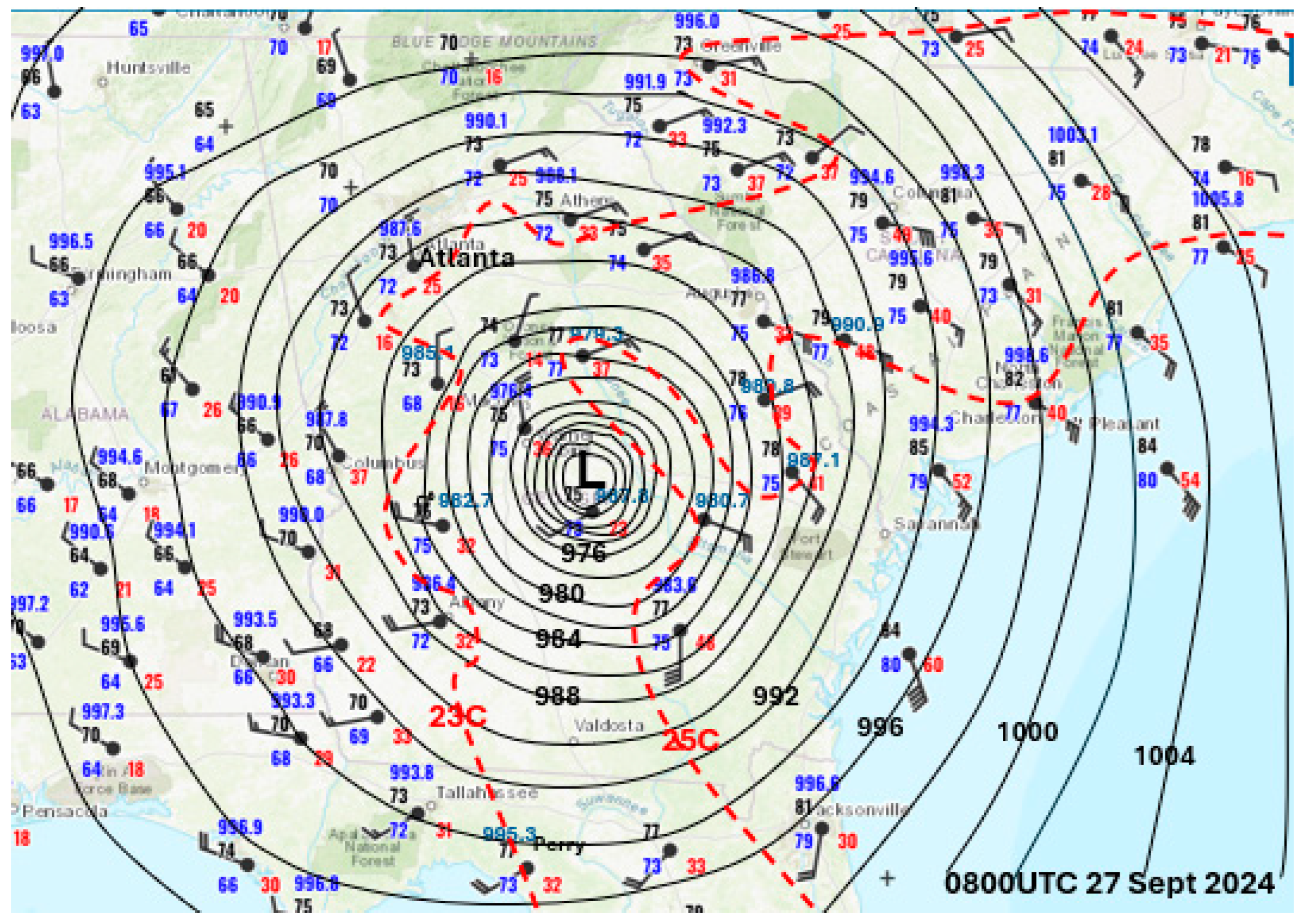
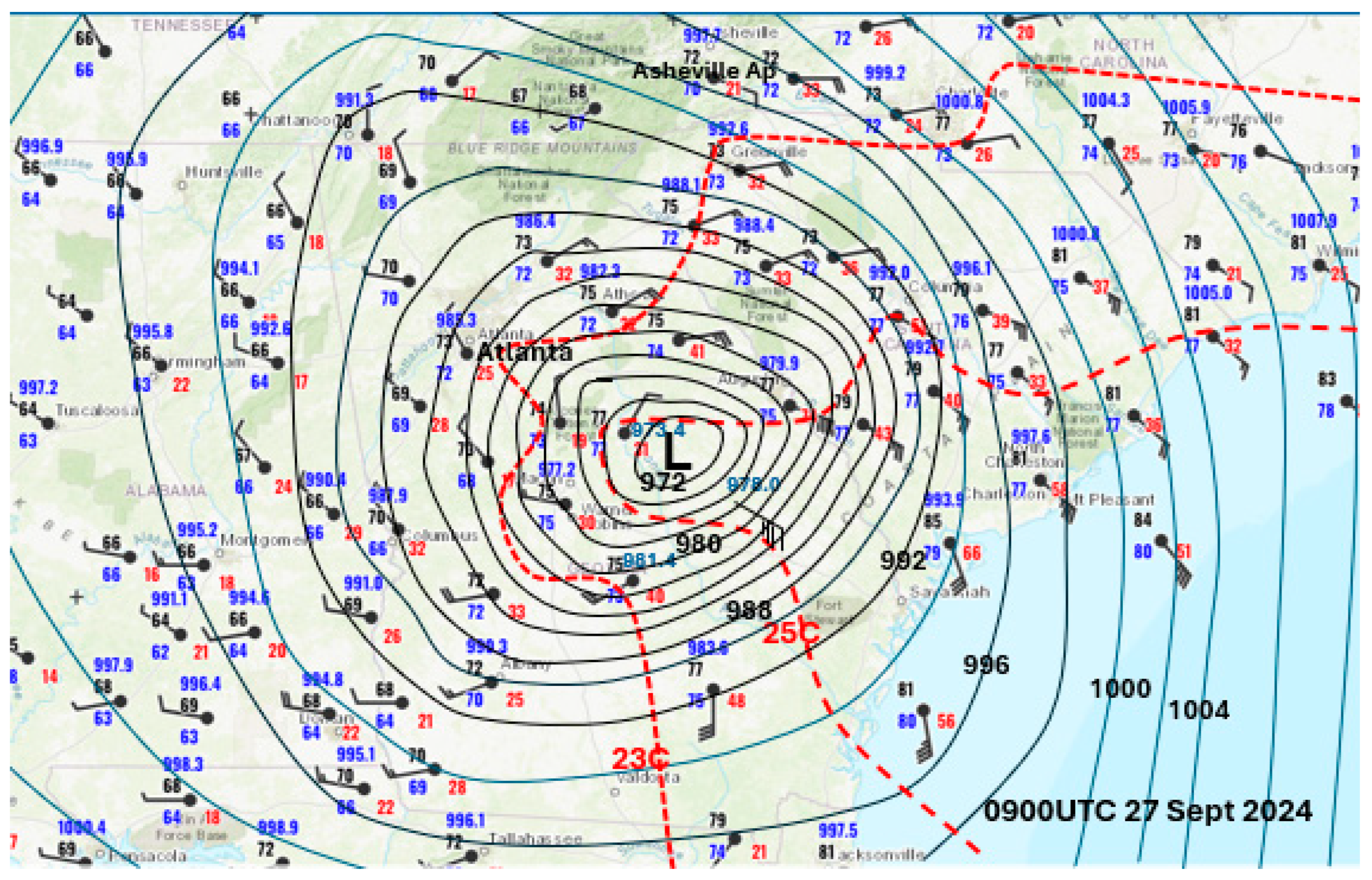
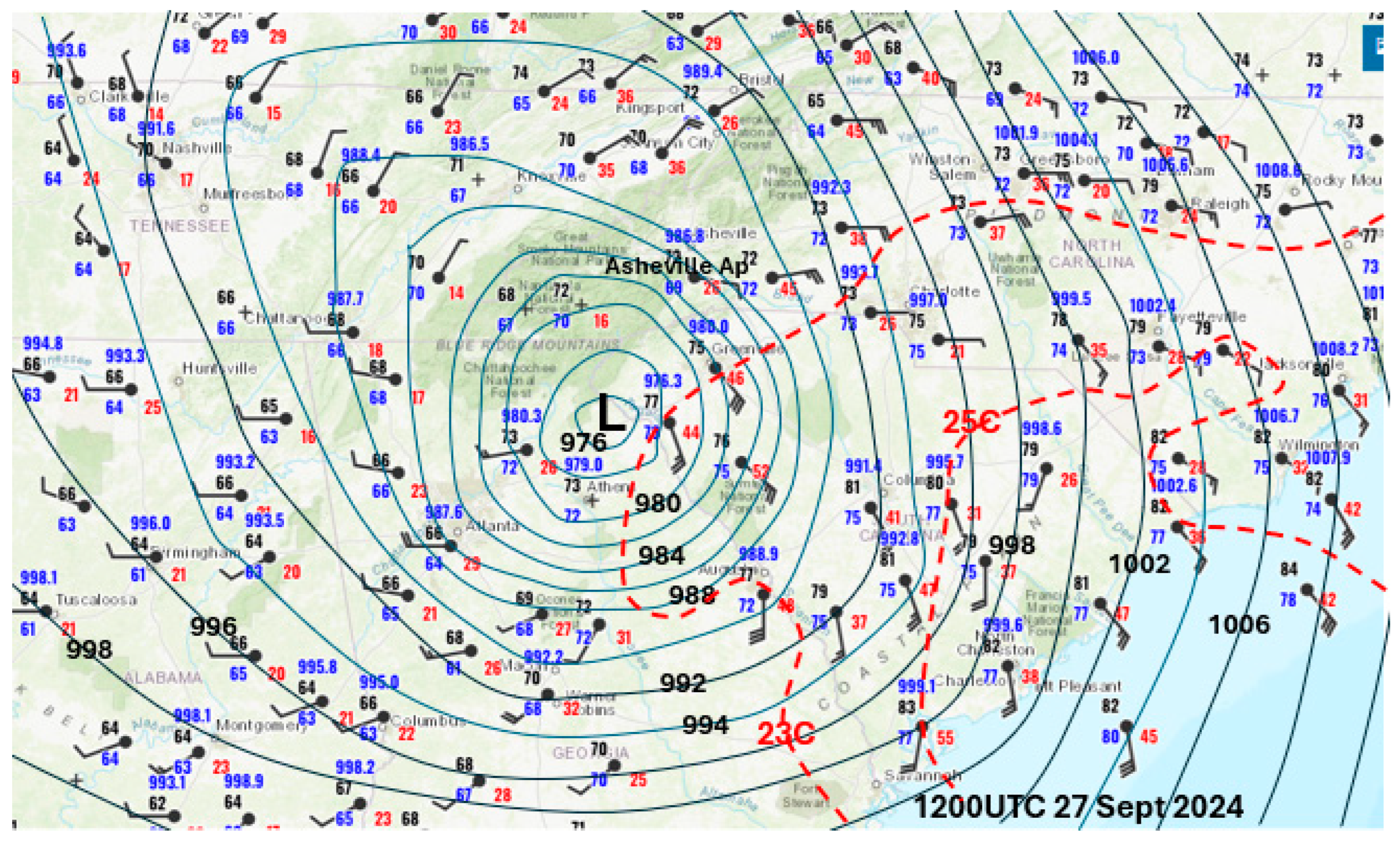
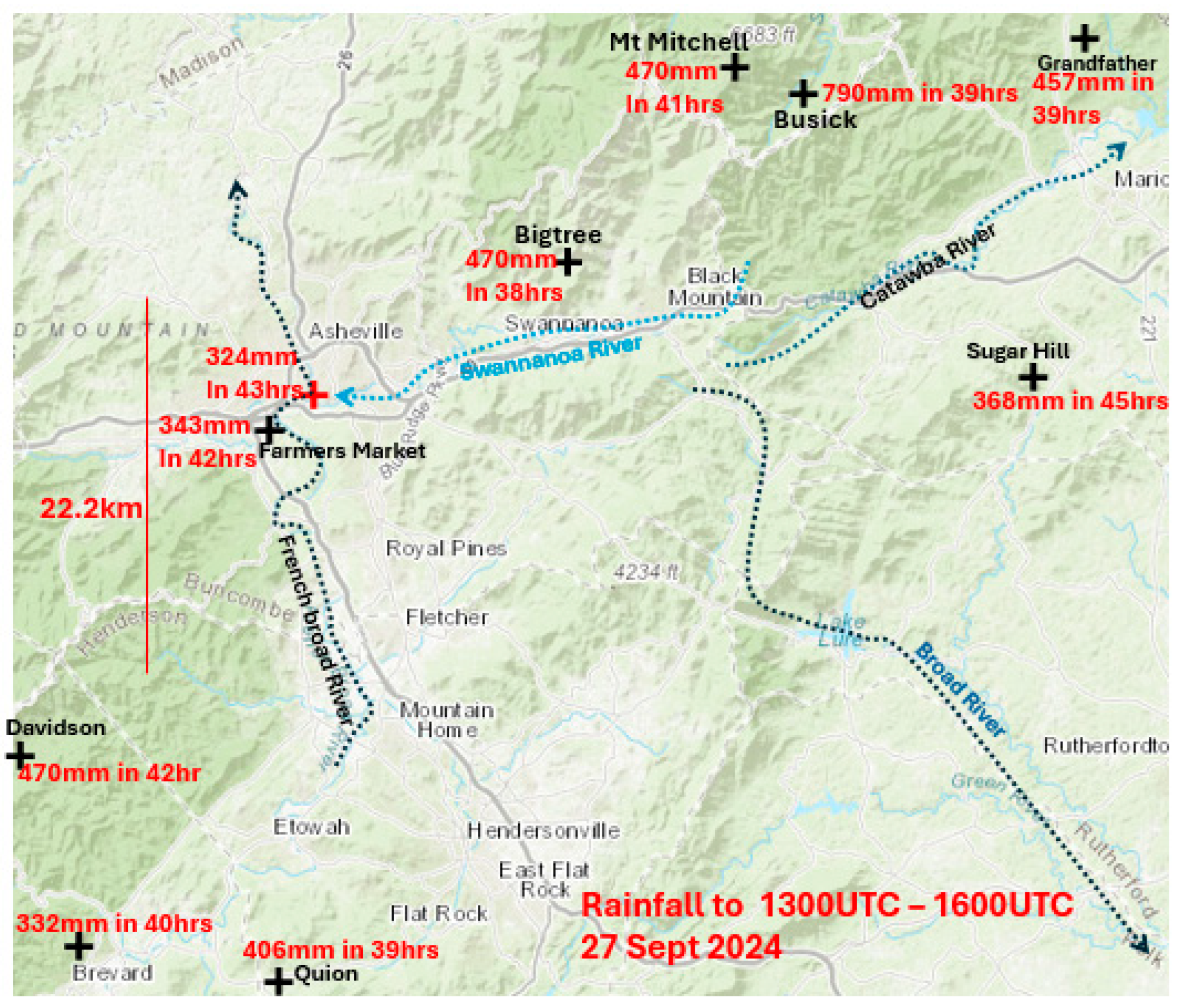
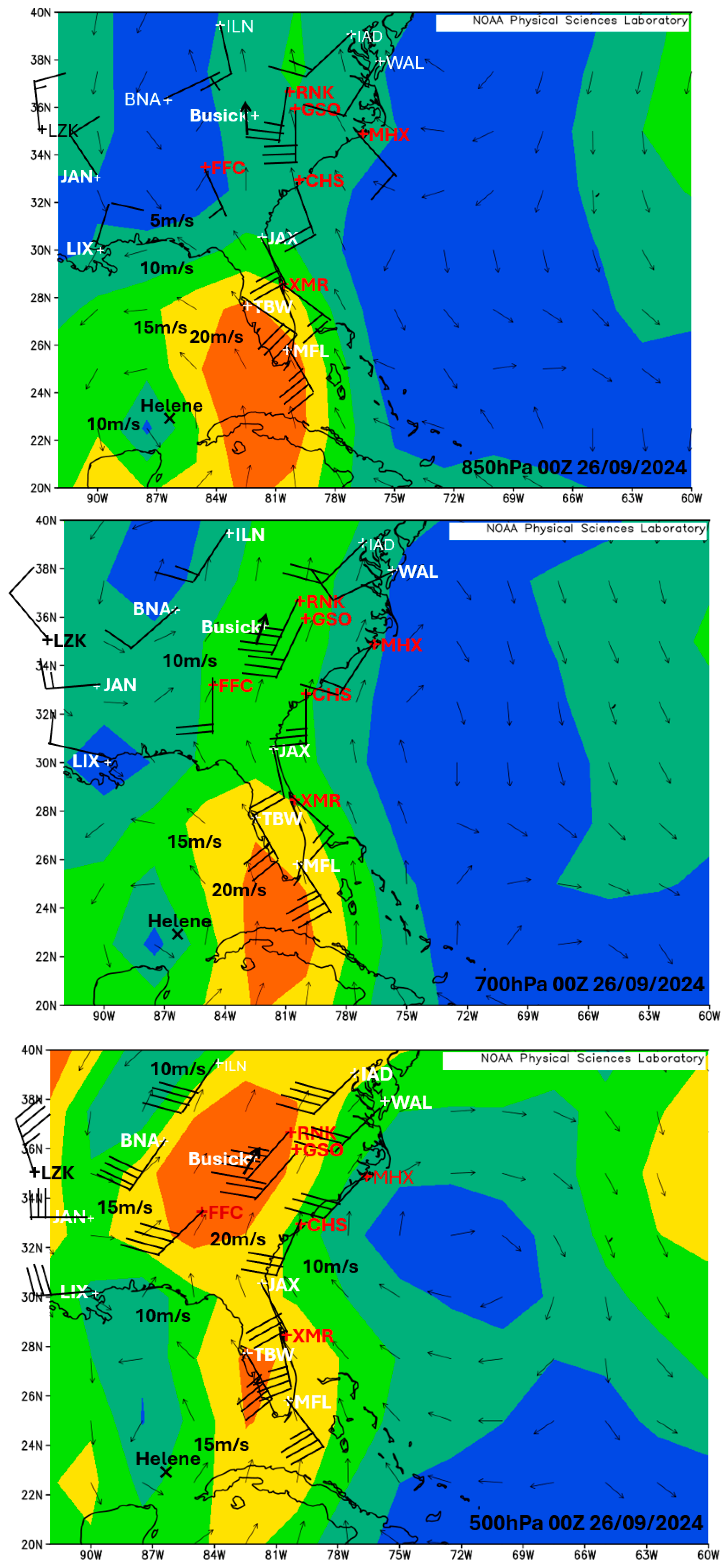

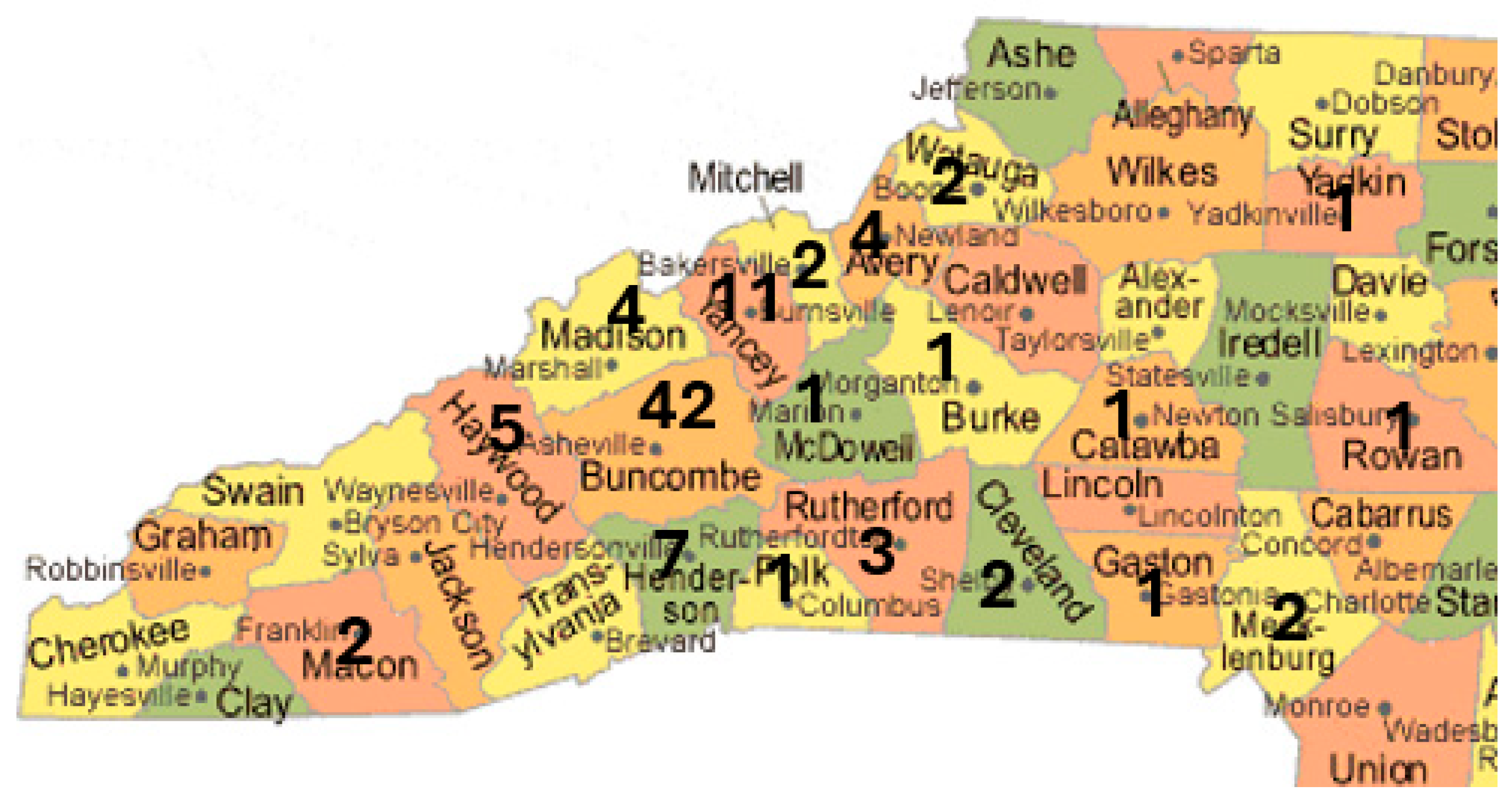
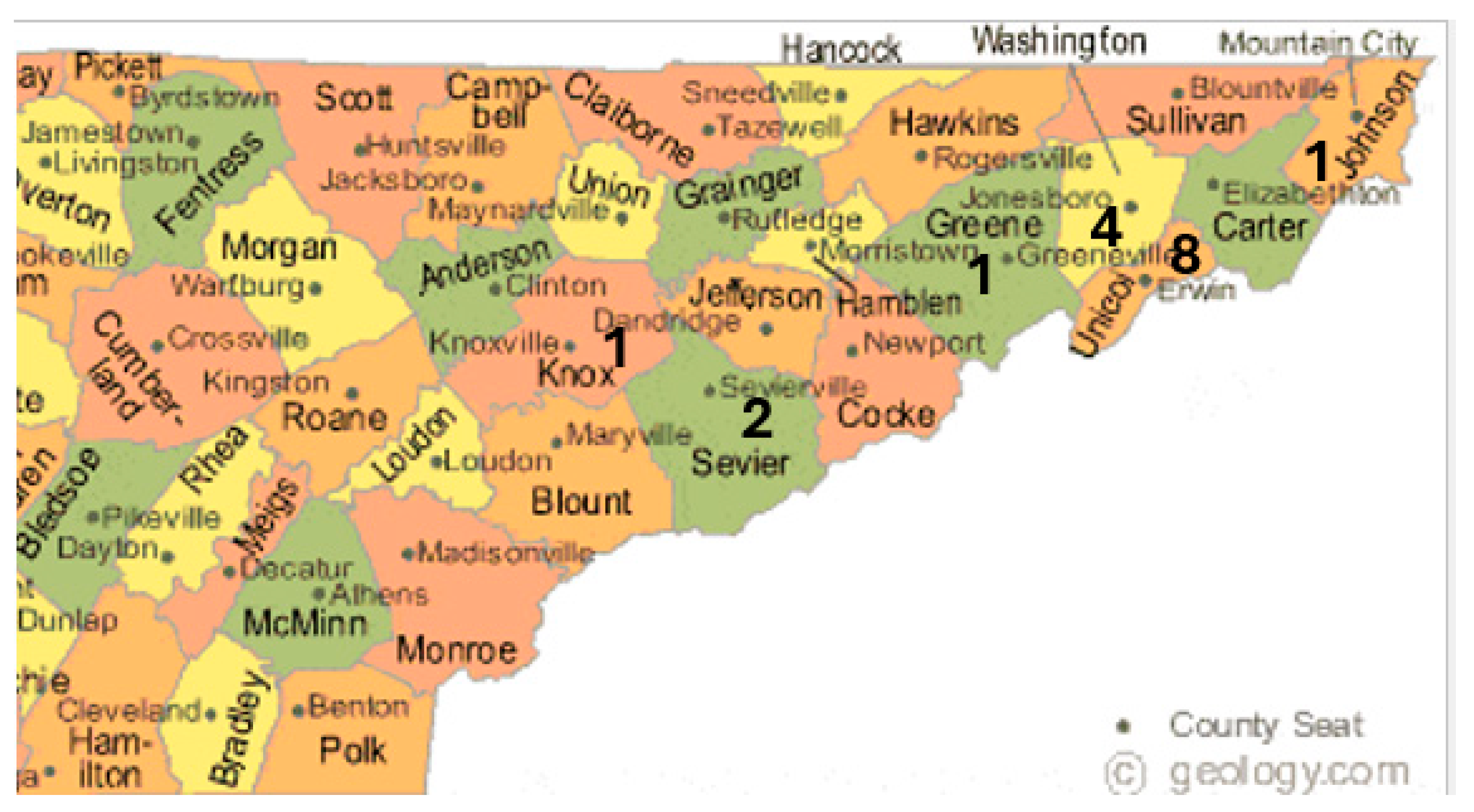
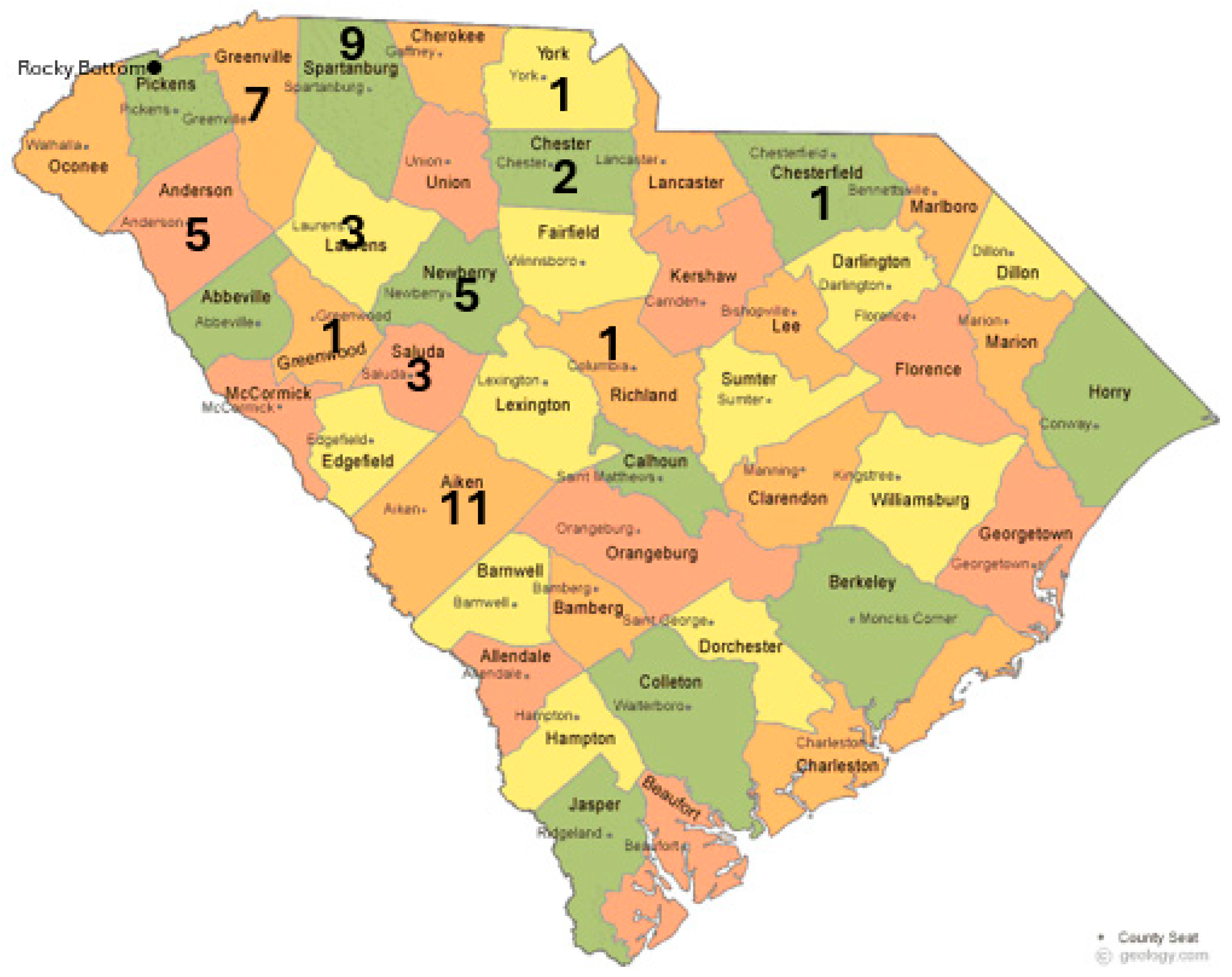

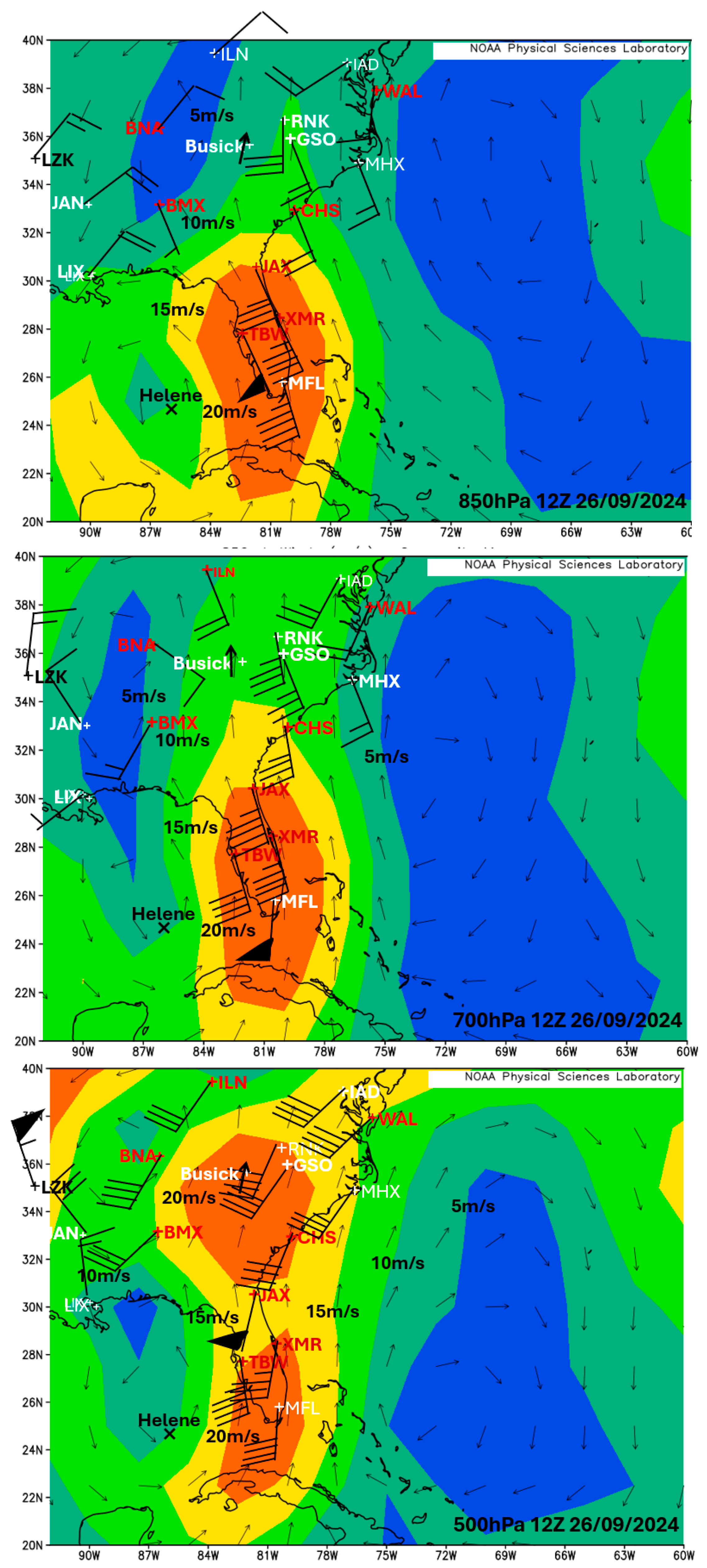
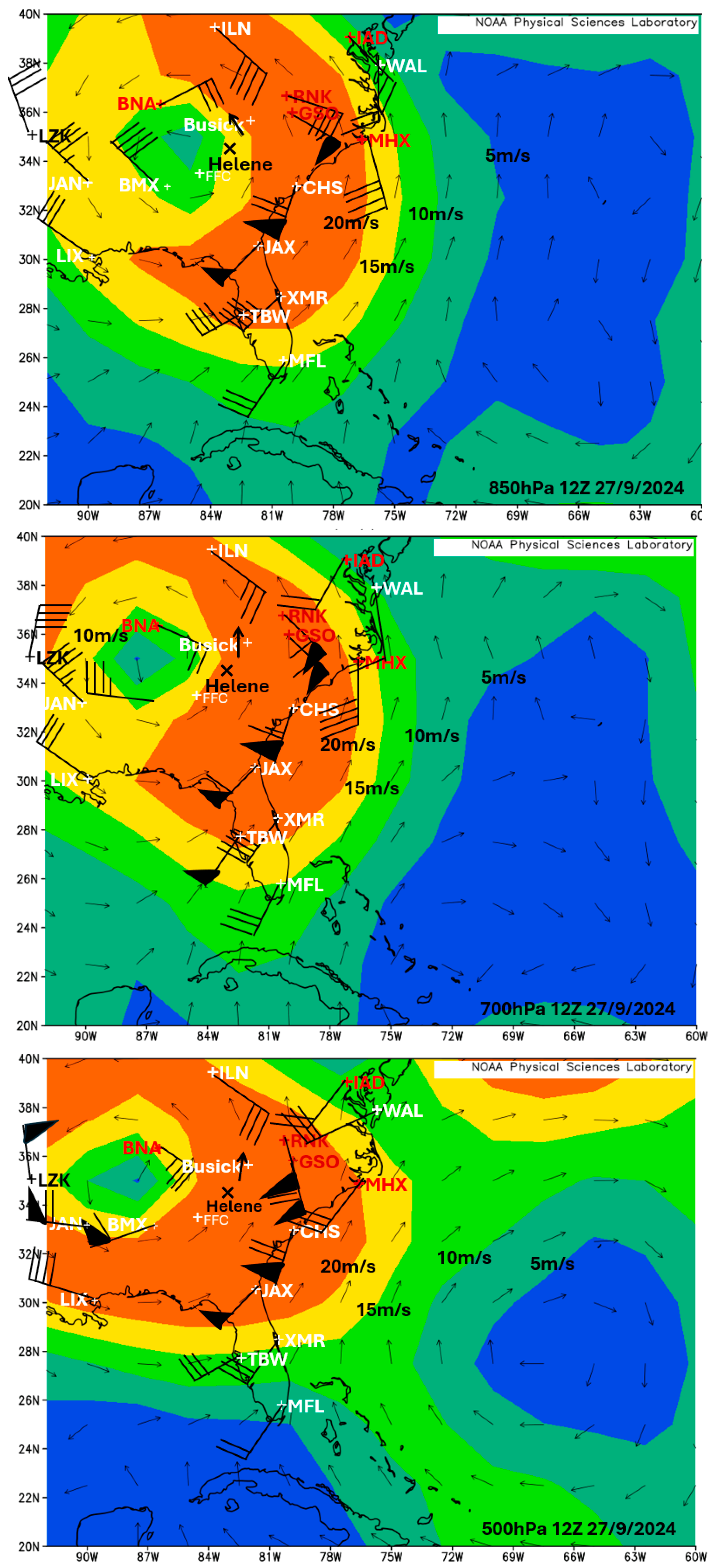
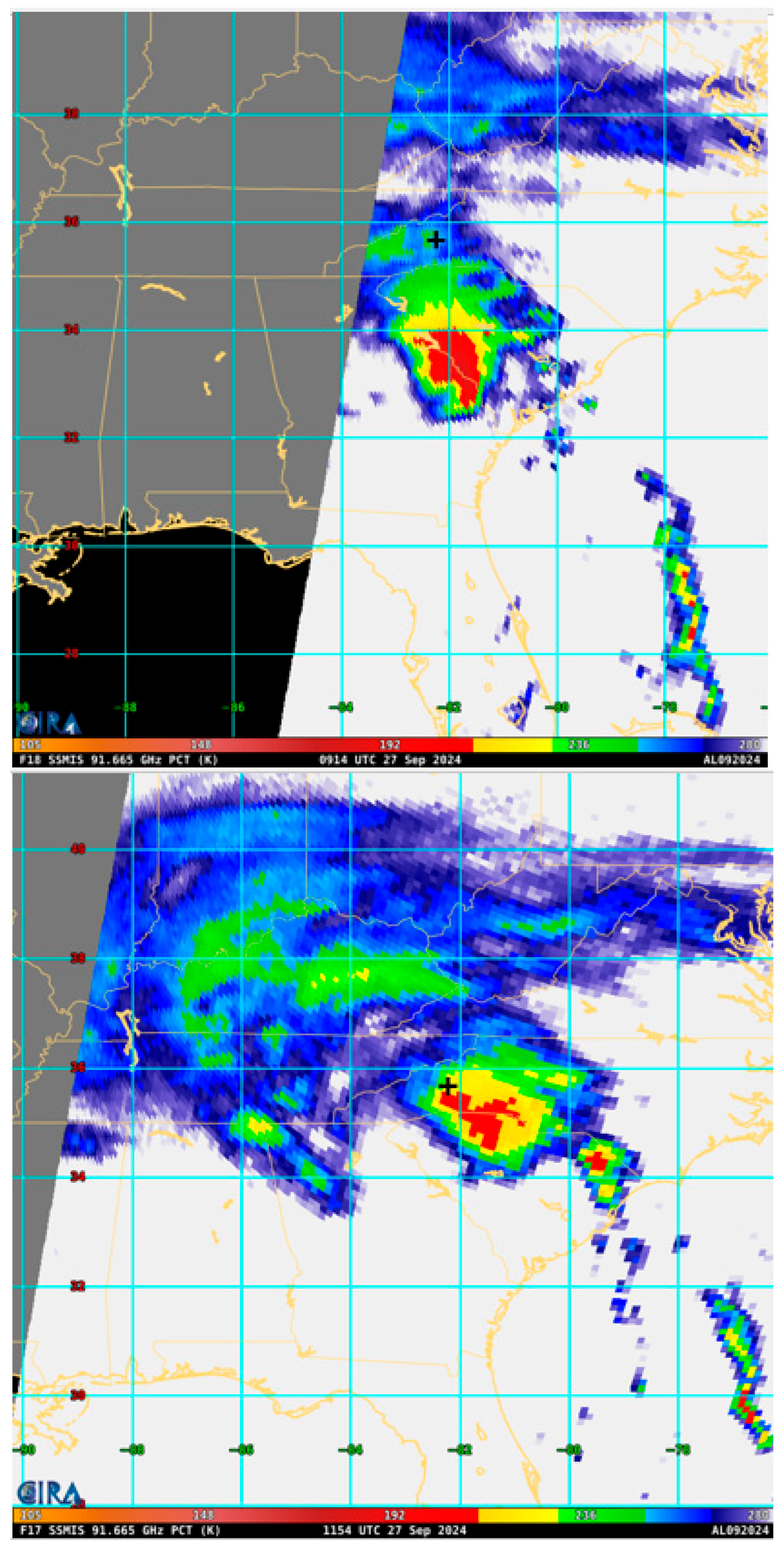
Disclaimer/Publisher’s Note: The statements, opinions and data contained in all publications are solely those of the individual author(s) and contributor(s) and not of MDPI and/or the editor(s). MDPI and/or the editor(s) disclaim responsibility for any injury to people or property resulting from any ideas, methods, instructions or products referred to in the content. |
© 2025 by the author. Licensee MDPI, Basel, Switzerland. This article is an open access article distributed under the terms and conditions of the Creative Commons Attribution (CC BY) license (https://creativecommons.org/licenses/by/4.0/).
Share and Cite
Callaghan, J. Disastrous Effects of Hurricane Helene in the Southern Appalachian Mountains Including a Review of Mechanisms Producing Extreme Rainfall. Hydrology 2025, 12, 201. https://doi.org/10.3390/hydrology12080201
Callaghan J. Disastrous Effects of Hurricane Helene in the Southern Appalachian Mountains Including a Review of Mechanisms Producing Extreme Rainfall. Hydrology. 2025; 12(8):201. https://doi.org/10.3390/hydrology12080201
Chicago/Turabian StyleCallaghan, Jeff. 2025. "Disastrous Effects of Hurricane Helene in the Southern Appalachian Mountains Including a Review of Mechanisms Producing Extreme Rainfall" Hydrology 12, no. 8: 201. https://doi.org/10.3390/hydrology12080201
APA StyleCallaghan, J. (2025). Disastrous Effects of Hurricane Helene in the Southern Appalachian Mountains Including a Review of Mechanisms Producing Extreme Rainfall. Hydrology, 12(8), 201. https://doi.org/10.3390/hydrology12080201




